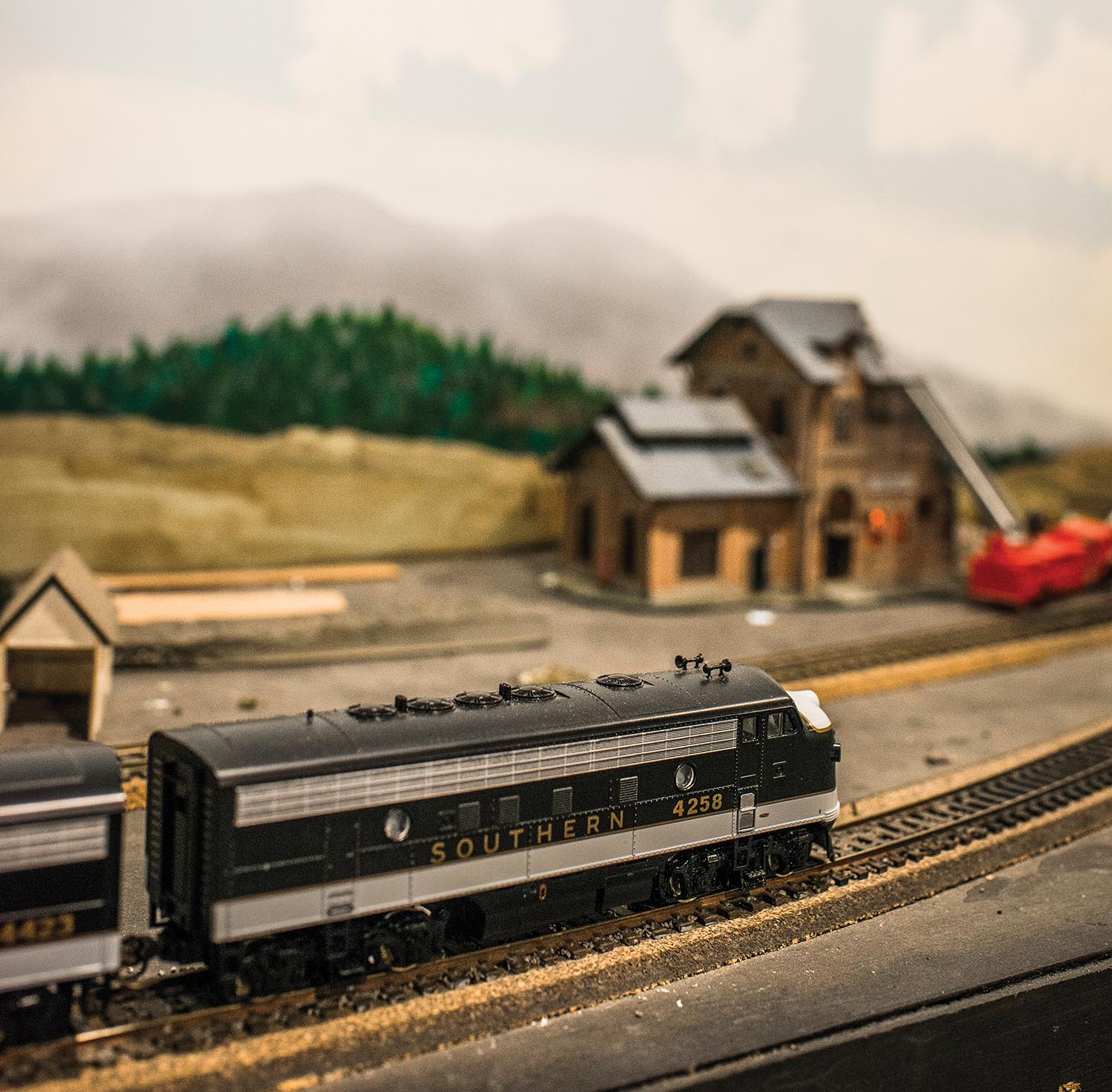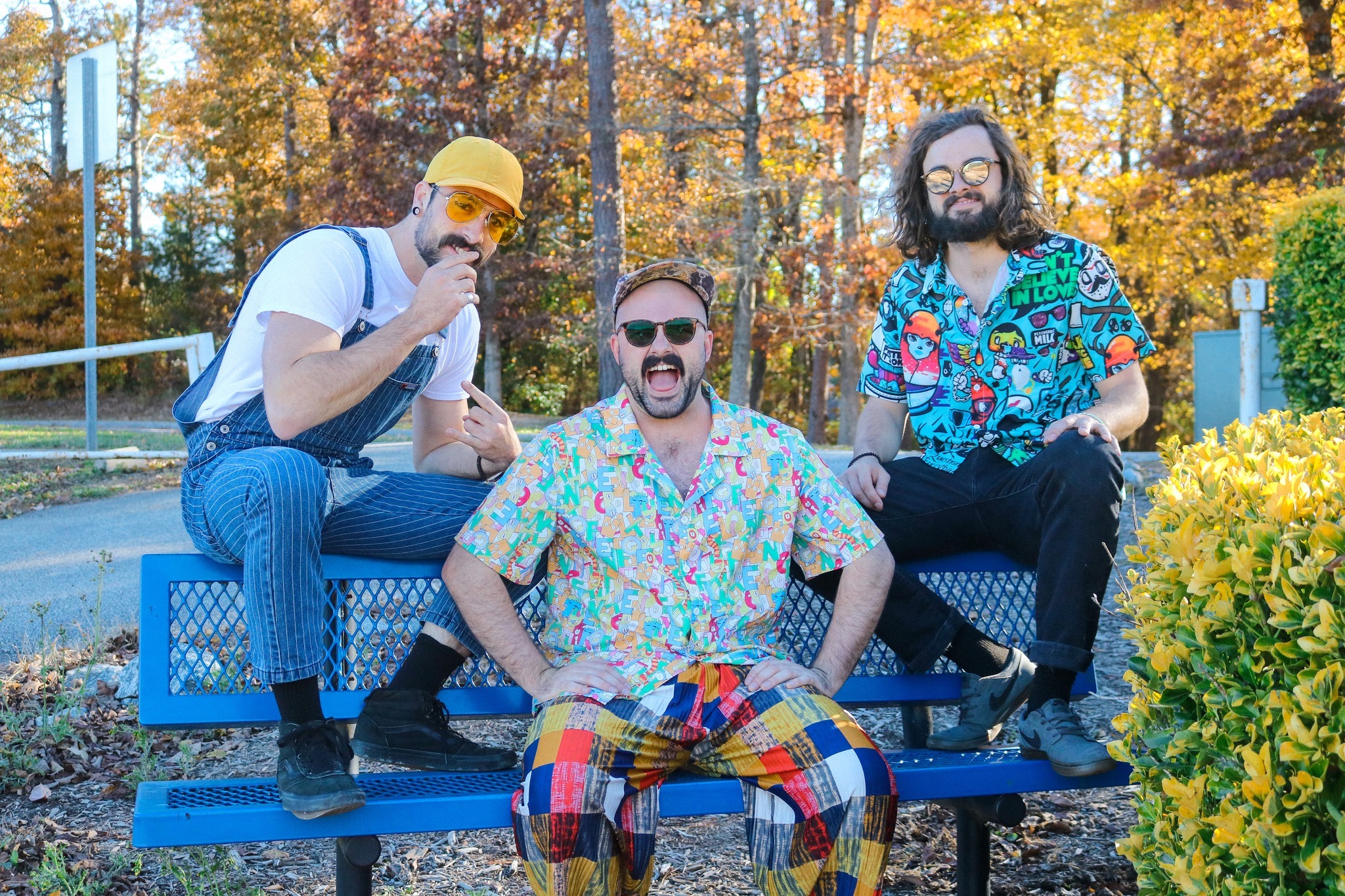
Still chugging after two centuries: Model trains have been around almost as long as real ones.
Photo by Karin Strickland
They are often hidden away, in closets or bottom drawers — those childhood mementos of an earlier, and, it seems, simpler time: the Little League baseball mitt, the Barbie and Ken dolls, the Etch-a-Sketch and the cereal-box magic ring.
But Larry Morton’s memento is too big to fit in any drawer. It’s a 28’ by 28’ scale model of the long-defunct Reading Railroad that once chugged through northeastern Pennsylvania, where Morton, now 76, grew up.
“Like many guys my age, I received a Lionel train set for Christmas as a kid and was instantly hooked on the hobby,” remembers Morton, who is president of Hendersonville’s Apple Valley Model Railroad Club. The club boasts more than 100 members and maintains a display of railroad memorabilia and working scale models at Hendersonville’s historic 1902 train depot on Maple Street.

Photo by Karin Strickland
Apple Valley will join many similar enthusiast clubs at next month’s Asheville Model Train Show at the WNC Agricultural Center in Fletcher, an event now in its 29th year. Up to ten working model layouts will be on display, including the largest gauge “G” (garden) scale, usually reserved for outdoor exhibitions, and on down to the smallest gauge, the Zs. Hundreds of vendors will sell everything from out-of-the-box sets and layout designs to miniature buildings and scenery.
“The show has grown to become the largest [of its kind] in Western North Carolina,” confirms Fred Coleman, who’s been coordinating the event for 15 years and is vice president of the Southeastern Region of the National Model Railroad Association. “We generally have around 2,000 folks on Friday and Saturday, and vendors come from up to 11 other states,” he reports.
Like Morton, Coleman got into the model-train habit when he was a kid. But when he joined Western North Carolina Model Railroaders 20 years ago, something clicked on a deeper level. “It’s amazing how, when you are affiliated with other modelers, your enthusiasm grows rapidly,” Coleman observes.

Toy trains have been around just as long as real railroads, but they began to move from child’s play to serious hobby as more and more American homes became electrified in the early decades of the last century. The first electric toy train set appeared in America in 1901 from stalwart Lionel, still in business. Fifty years later, the company, which favors O-scale trains, introduced models in the somewhat smaller gauge HO-scale, a German invention intended to capitalize on the growing middle-class interest in a hobby previously reserved for a wealthier clientele.
The HOs were half the size of O-scale sets (hence the “H”) and suitable for modest settings, like tabletops. But they were more carefully detailed than their bigger counterparts; Morton suspects the HO scale got its popularity “because it was the first to offer realistic-looking trains and track instead of the toy-like look.”
Enthusiasts build in the whole range of scales, and a big draw at the train show will be the “live steam” G-scale train. (There’s a similar spectacle, Rocky Cove Railroad, on permanent outdoor exhibit at the North Carolina Arboretum in South Asheville.)
“Each scale has its own unique features that make it attractive to certain individuals,” Morton says. His own home layout is an S-scale, standing midway on the range.



Fred Coleman coordinates the Asheville Model Train Show.
Photos by Karin Strickland
Despite all the interest, model trains, like their real-world counterparts, are facing a changing market. “[It’s] a bit different from when I got interested,” says Coleman. “The majority [of collectors] are more like ‘ready to run’ hobbyists rather than wanting to build or create.”
The shift means that much of the business end has moved from brick-and-mortar hobby shops to online sales, where out-of-the-box sets are popular sellers.
But true aficionados who build their own systems still flock to shows like the one at the Ag Center to get inspiration, populate their custom-made designs, and rub shoulders with peers. “Many will model their childhood memories of the railroad where they grew up, which is the best part of model railroading,” Coleman says. “You can model your own world, whatever it might be.”
The Asheville Model Train Show happens at the Western North Carolina Agricultural Center (1301 Fanning Bridge Road, Fletcher) on Friday, March 1 (noon-7pm) and Saturday, March 2 (9am-5pm). Admission is $6 per day; children under 10 are free with a paying adult. For more information, see asheville-trainshow.com. The Apple Valley Model Railroad Club is located at 650 Maple St. in Hendersonville, open Saturdays from 10am-2pm and Wednesdays from 1-3pm (avmrc.com); e-mail contact@avmrc.com to ask about special showings. Also visit Western North Carolina Model Railroaders at wncmrr.org and the Southeast Region of the National Model Railroad Association at nmra.org/regions/southeastern-region.



